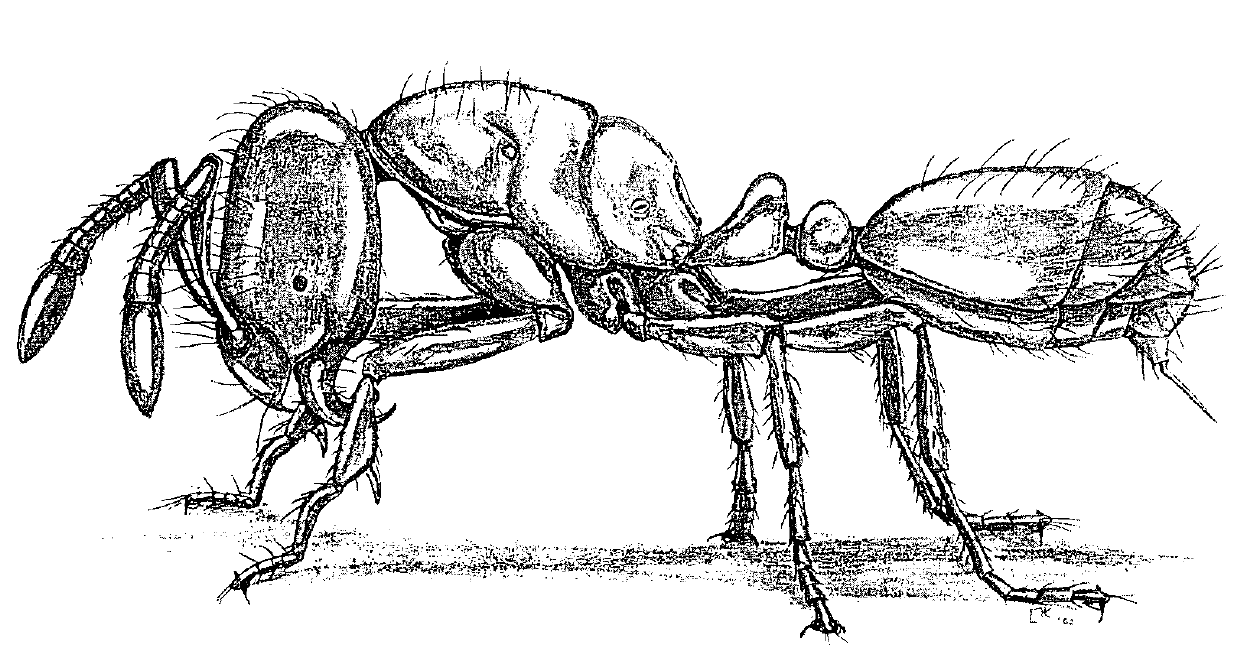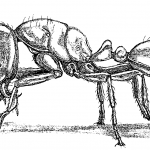 Solenopsis molesta molesta (Say). Drawing by Holly K. Coovert.
Solenopsis molesta molesta (Say). Drawing by Holly K. Coovert. This is one of Ohio’s smallest species of ants, and our most commonly encounteredSolenopsis. Named the Thief Ant because this diminutive ant often lives in close proximity to larger ant species and steals their food, a behavior known as lestobiosis. Because of their tiny size, they are usually ignored by larger ants.
Described posthumously by Thomas Say ( 1787-1834), the father of American entomology, in 1836, who named them molesta because of their nuisance in houses and the sting which was described “like the puncture of a very fine needle.”
Yellow to yellowish-brown, head dorsally and gaster dorsomedially often slightly darkened; body mostly smooth and very glossy. The presence of the bare, non-punctate central longitudinal stripe on the head with the bordering hairs angling in towards each other, once seen, is diagnostic. This species is larger than S. caroinensis and tends to be darker in color than either it or S. texana.
Colonies contain up to a few thousand workers (Thompson, 1990). Van Pelt( 1958) counted colony sizes in Florida, ranging from 60 to I 00 workers. With multiple queens (Wheeler & Wheeler ( 1986) reported a colony in Nevada with 23 queens).
Queens can apparently carry workers on their nuptial flights, possibly to help found new nests.
Size
Nuptial Flight Dates
Habitat
Food
Behavior
Nesting Information
Verified Locales (counties)
Adams, Allen, Ashtabula, Belmont, Butler, Carroll, Clermont, Columbiana, Delaware, Geauga, Hancock, Highland, Hocking, Jackson, Licking, Miami, Montgomery, Morrow, Ottawa, Perry, Pickaway, Pike, Preble, Sandusky, Seneca, Shelby, Washington, Wyandot,


